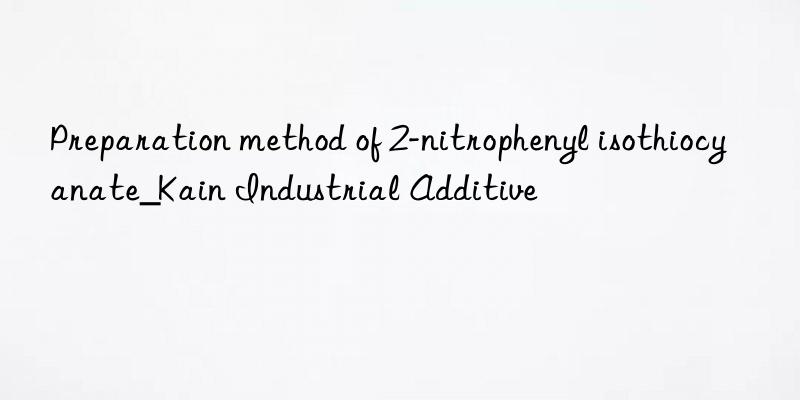
Background and overview[1]
2-Nitrophenyl isothiocyanate is an isothiocyanate compound. Isothiocyanate is often used to construct heterocyclic skeletons and is a very versatile organic synthesis intermediate and pharmaceutical intermediate. It is widely used in the preparation of medicines, pesticides and dyes. Therefore, the research on the synthesis method of isothiocyanates has always been an important topic in organic chemistry. The preparation methods of isothiocyanate mainly include the following ways: Thiophosgene synthesis method: isothiocyanate is generated by direct reaction of thiophosgene and amine compounds. However, this reaction requires the use of thiophosgene, which is a highly toxic volatile liquid. Its production, transportation and use are unsafe and are also harmful to the environment. Carbon disulfide method: First, amine compounds and carbon disulfide form dithioamino salts under the action of alkali, and then react with desulfurization reagents to form isothiocyanates. Commonly used desulfurization reagents include methyl chloroformate, p-toluenesulfonyl chloride, di-tert-butyl dicarbonate, solid phosgene, elemental iodine, chlorophosphonate, chlorosilane, etc. However, most of these reactions have harsh conditions, long reaction times, many by-products, and cumbersome post-processing. Thiocyanate method: The reaction of halogenated hydrocarbons and thiocyanate produces isothiocyanate. However, this method still has many shortcomings such as low yield of target product, cumbersome operation process, and large amount of solvent. Isonitrile method: In organic solvents, isothiocyanate is synthesized from isonitrile and sulfur powder or vulcanizing agent in the presence of a metal catalyst. However, the synthesis and purification of isonitriles are large-scale, and isonitriles are highly toxic, which is not conducive to industrial production.
Preparation[1]
Step 1: Weigh phenoxysulfonyl chloride (2mmol) and 2-nitroaniline (4mmol), add them to a single-necked flask containing tetrahydrofuran (10mL), and stir for 1 hour at 60°C. . Stop the reaction, add 1M dilute hydrochloric acid (10 mL) and dichloromethane (10 mL), extract and separate the organic phase, wash with water and dry over anhydrous sodium sulfate, and evaporate the solvent under reduced pressure to obtain N‑2-nitrophenyl‑O‑phenyl. The yield of thioamide intermediate was 85%.
Step 2: Weigh the above-mentioned N-2-nitrophenyl-O-phenylthioamide (1mmol) and sodium hydroxide (1.2mmol), and add them to a solution containing dichloromethane (5mL). In a single-necked flask, stir the reaction for 1 hour at 25°C. Stop the reaction, add water (10 mL) and dichloromethane (15 mL), extract and separate the organic phase, extract the aqueous phase with dichloromethane (15 mL), combine the organic phases, wash with saturated brine (15 mL), and anhydrous sodium sulfate dry. After separation by column chromatography (ethyl acetate: petroleum ether = 1:5), benzene 2-nitrophenyl isothiocyanate was obtained with a yield of 95%.
Main reference materials
[1] CN201310012619.X A two-step method for synthesizing isothiocyanate

 微信扫一扫打赏
微信扫一扫打赏

